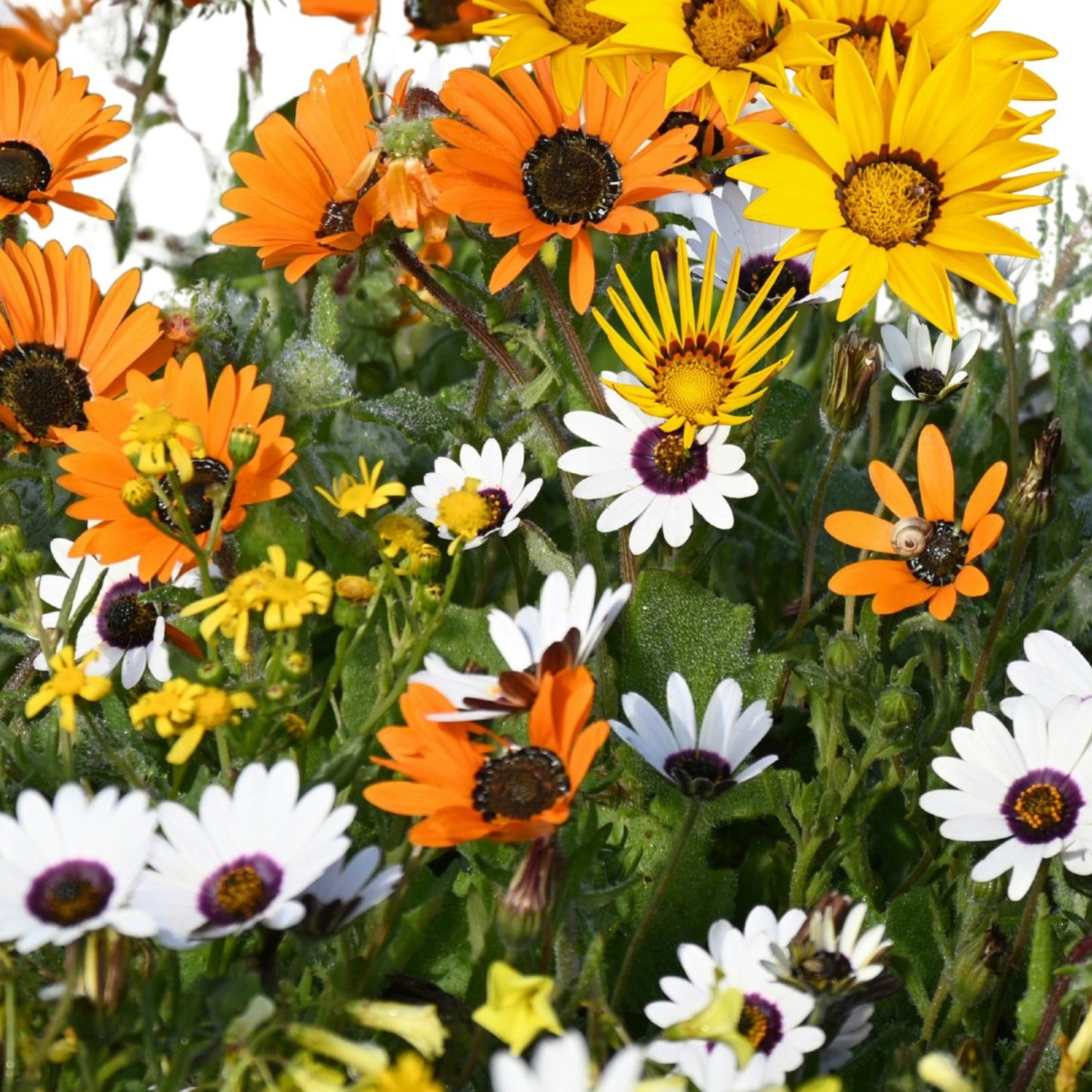Jonquil
Namaqualand Flower Mix - 0.1 Gram
Namaqualand Flower Mix - 0.1 Gram
Couldn't load pickup availability
The Namaqualand Flower Mix is a stunning blend of hardy, drought-tolerant wildflowers, inspired by the breathtaking springtime blooms of South Africa’s Namaqualand Desert. This mix is designed for arid and semi-arid climates, producing a dazzling display of brightly colored flowers in shades of orange, yellow, pink, purple, and white. The species included typically feature fast-growing, sun-loving annuals, many of which belong to the Asteraceae and Aizoaceae families.
Common Flowers in the Mix
The exact species may vary, but common components include:
Dimorphotheca sinuata (African Daisy) – Bright orange and yellow daisy-like flowers.
Ursinia anthemoides (Parachute Daisy) – Golden-yellow blooms with darker centers.
Arctotis fastuosa (Cape Daisy) – Large, colorful daisy flowers in orange, pink, and red hues.
Grielum humifusum (Yellow Pimpernel) – Ground-hugging yellow flowers.
Nemesia species – Delicate, small flowers in shades of pink, purple, and white.
Gazania species – Hardy, drought-resistant daisies with bold patterns.
Plant Characteristics
Height: 15–45 cm, depending on the species.
Spread: 20–50 cm.
Bloom Time: Spring to early summer (blooms 6–8 weeks after sowing).
Lifespan: Mostly annuals, with some self-seeding for naturalized re-growth.
Growing Conditions
Light: Full sun (6–8 hours of direct sunlight per day).
Soil: Well-draining, sandy or loamy soil (prefers poor, low-nutrient soils).
Watering: Drought-tolerant; requires minimal watering once established.
Temperature: Best in warm, dry climates; germinates best at 15–25°C.
Sowing & Propagation
Temperate regions: Late winter to early spring.
Arid regions: Early autumn before seasonal rains.
Loosen soil and remove weeds before sowing.
Broadcast seeds evenly over the surface.
Lightly rake to cover seeds with a thin layer of soil.
Water gently to moisten but avoid overwatering.
Germination Time: 7–21 days, depending on soil temperature.
Spacing: Thin seedlings to 20–30 cm apart for best growth.
Care & Maintenance
Minimal Fertilizer: Too much nitrogen encourages leaves over flowers.
Deadheading: Not necessary, but it can extend blooming time.
Mulching: A light layer of mulch can help retain moisture in dry areas.
Weed Control: Remove competing weeds for better flowering.
Benefits & Uses
Wildlife-Friendly: Attracts bees, butterflies, and beneficial insects.
Drought-Resistant Landscaping: Ideal for xeriscaping, rock gardens, and dry meadows.
Low-Maintenance: Perfect for large-scale plantings with minimal care.
Self-Seeding: Flowers often return naturally in next seasons.
Would you like specific recommendations on where to plant or how to mix them with other flowers?
Share


